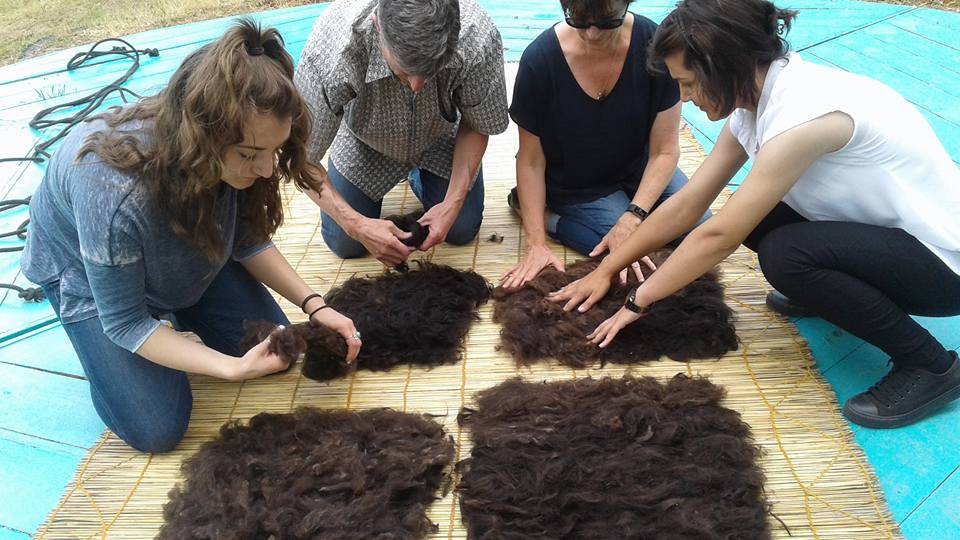Felting felt
Felting (English: felting, German: felting). filzen is a method of preparing woolen material for nomads and mountain cattle breeders of Kyrgyzstan. Felting is an invention of the nomads, which has entered the global culture. Felt products (hats, shoes, bags, carpets, etc.) have become widespread outside the nomadic pastoral environment.
The main raw material for felting felt is sheep wool with a small addition of lamb, camel and goat wool, horse hair and hair that falls out during the molting of cattle. The most valuable is the felt made of sheep's wool, which is cut in the fall.
Felting involves several consecutive operations: knocking down the wool with a special rod (preferably in dry sunny weather, so that the wool is not soaked in atmospheric moisture); spraying the whipped wool with water or whey (in order to seal the wool mass); rolling the wool into a roll; wrapping the roll and rolling (felting) the roll on the ground. So you get large pieces of felt for the yurt. Small pieces that go to the manufacture of household utensils and shoes are simply knocked down and crushed with their hands. Historically, felting was carried out at the beginning of autumn by the collective forces of a group of relatives and neighbors, the end of it was accompanied by a joint treat.
In modern culture, felt has a wide application: felt for construction, technical, household, etc. Today, felt is also a popular material for creativity.
We offer you a master class on making a piece of felt with your own hands in the size of 50x50 cm, which you can take with you as a souvenir. It can be used in the house as an element of interior design or used for the production of souvenirs and crafts.

